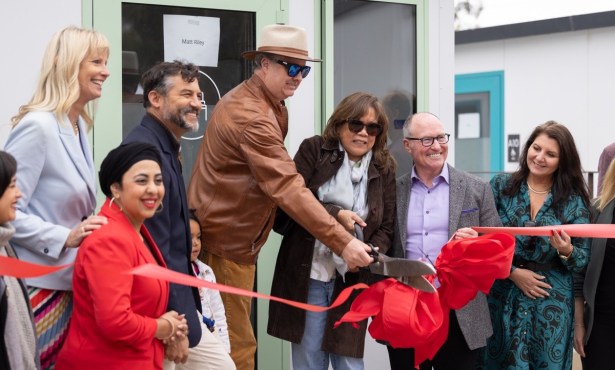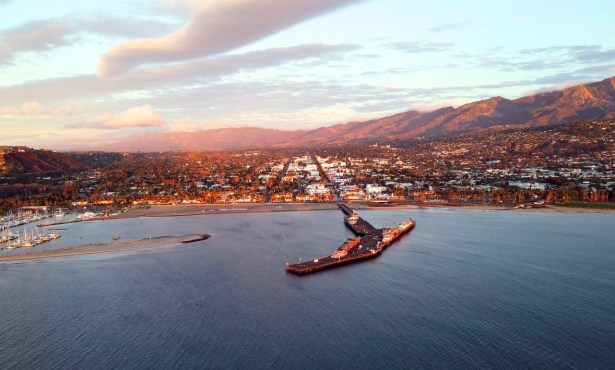Goleta Business Unveils Space Technology
Cooling System by Pacific Design Technologies Used in Mars Science Laboratory
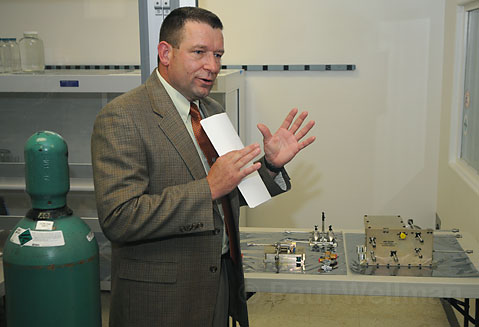
For years, the office buildings nestled in the suburbs of Goleta have been a warren of technological innovation, producing cutting-edge, high-tech gadgetry for a variety of applications. Everything from defense contractors to medical supply companies work in Goleta, but on Thursday, August 7, the spotlight was on Pacific Design Technologies for the company’s work developing a cooling system for the latest Mars rover: the Mars Science Laboratory (MSL), which is scheduled to be launched in September 2009.
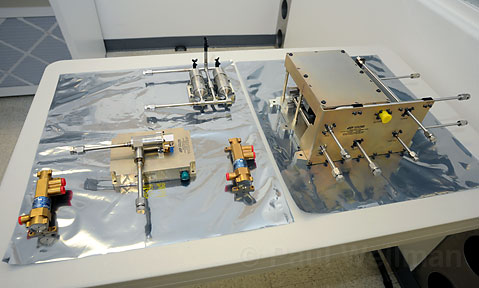
In a press conference attended by Pacific Design Technologies employees and NASA and City of Goleta officials, Congressmember Lois Capps praised the company for its achievement. “Pacific Design Technologies is one of only a handful of companies that has received a 100 percent [quality] rating,” said Humna Kahn, a project administrator for NASA’s Jet Propulsion Laboratories (JPL). “We value [Pacific Design Technologies] as a supplier and hope [they] participate in many more NASA missions to come.”
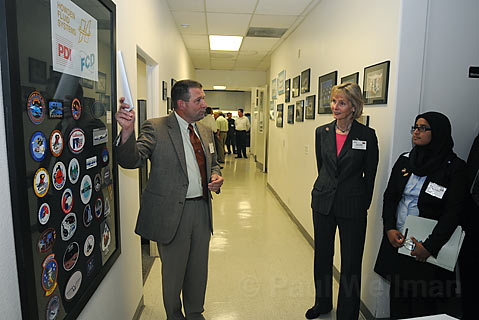
Pacific Design Technologies (PDT) was formed in 2000 from the remains of Pneu Devices, Inc., which had picked up and moved from Goleta to Los Angeles. “I’m glad to say that we’ve never lost a contract when in competition with them,” said PDT president Richard Fisher with a laugh as he led a tour through the company’s design facility. The company’s headquarters is full of reminders – from space mission stickers to photographs of military aircraft – of the projects they have contributed to, which Fisher said gives employees a sense of ownership over the products they are developing. Kahn contributes to this process, by conducting training with PDT and other suppliers to keep them informed of their impact on NASA’s space program. “The greatest reward for me has been to go to them and explain from a customer’s point of view exactly how they’re contributing to the NASA space program and how they’re enabling the continuation of space exploration.”

MSL is not the first Mars Rover that the company has worked on. It also designed and built cooling systems for the Mars Exploration Rover mission, which launched both Spirit and Opportunity in June, 2003, landing on Mars in January 2004. One rover is the size of a golf cart, and the other the size of a microwave oven, and both are still collecting surface data on the red planet. The current MSL project involves a somewhat larger rover – this time about the size and weight of a Mini Cooper sports car – to provide room for more advanced scientific equipment. According to NASA officials, this all leads up to a manned mission to Mars which is tentatively scheduled for 2030. Kahn also said that two manned missions to the moon are planned for 2015. The first mission will be for seven days, and the second will last for six months.
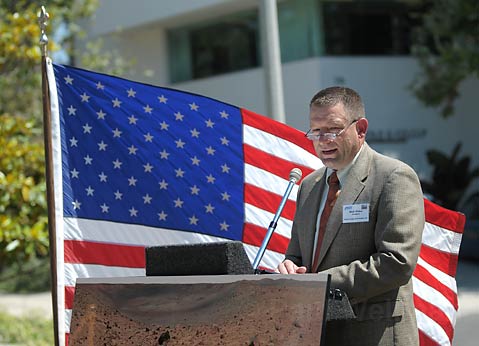
Pacific Design Technologies’s lineup of products includes a variety of pumps and heat transfer devices for aerospace applications, and they have been used by everyone from NASA to Lockheed Martin. One of the company’s cooling systems is currently deployed onboard Gulfstream aircraft used for surveillance in the Middle East, and some of its products have been utilized in a decoy missile that assumes the radar profile of an F-16 in order to protect pilots from enemy fire. Two of PDT’s pumps comprise the main cooling system aboard NASA’s MSL. The Cruise Integrated Pump Assembly will cool the rover’s avionics equipment during its seven-month voyage to Mars, and the Rover Integrated Pump Assembly will cool electronics and the Radio Isotope Thermoelectric Generator power plant on board the craft once it is on the ground. Due to the fact that a lot of instrumentation had to be packed into a relatively small amount of space, the challenge for PDT’s engineers and designers was to create something that was not only durable and energy efficient, but small and lightweight as well. The result is precision parts with welded joints to ensure that the system’s R-11 refrigerant will not leak once the rover is operational. Mike Brown, Pacific Design Technologies’s engineering manager, said that no seals or o-rings are used in the system.
In addition to the tour and accolades from local dignitaries, Fisher presented the Chuck Forbes Scholarship award, which was named after a former employee who passed away. The $1,000 scholarship was given by Fisher and members of Forbes’ family to recent Santa Ynez Valley High School graduate Clinton Sorensen, who will be going to California Polytechnic State University at San Luis Obispo this fall to study manufacturing engineering. “Chuck passed away June 10, 2003, the day of the MER Spirit launch,” said Fisher. “His legacy lives on in our continued design.”

